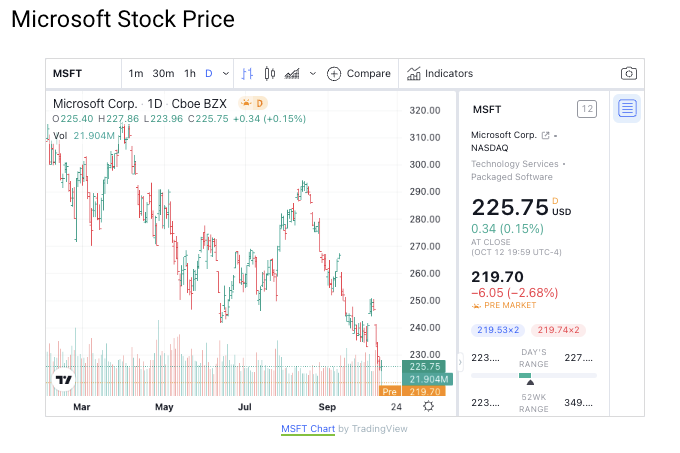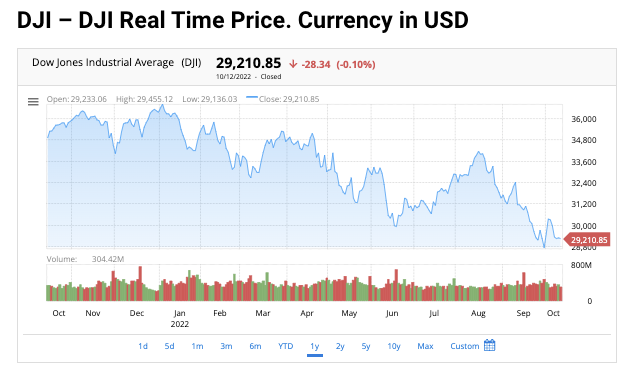It’s no secret that the Dow Jones Industrial Average (DJIA) has been in a slump as of late. The past week has seen the DJIA fall by over a thousand points, and there doesn’t seem to be an end in sight. This is causing a great deal of concern for investors all around the world as the prospect of another recession looms overhead.
In times like these, it’s important to keep a cool head and focus on the facts. So, let’s take a look at what we know about Dow futures today.
The History Of The Dow Jones Industrial Average
Before we get into the details of Dow futures today, it’s important to understand a bit about the history of the DJIA. The index was first created in 1896 by Charles Dow and Edward Jones, and it originally consisted of just 12 dow jones stocks. Over the years, it has expanded to 30 stocks, and it is now seen as one of the most important barometers of the US stock market.
The DJIA is often referred to as the “blue chip” index, as it consists of some of the largest and most well-known companies in the United States. These include names like Apple, Boeing, Coca-Cola, McDonald’s, and Microsoft.
The Fall Of The Dow Jones Industrial Average
The Dow Jones Industrial Average (INDEXDJX: .DJI) peaked on October 3rd, 2022, at 26,828.39 points. Since then, it has been in a steady decline, and it is now down to around 25,000 points. This represents a fall of over 6%, and it has investors worried about the possibility of a recession.
What Is Causing The Dow’s Decline?
There are a few factors that are thought to be contributing to the Dow’s decline.
1. The Trade War With China
The ongoing trade war between the United States and China is one of the most significant factors weighing on the Dow. The tariffs that have been imposed by both countries are estimated to have cost American companies billions of dollars, and they show no signs of stopping anytime soon. This has led to a great deal of uncertainty for businesses, and it has caused many of them to scale back their investment plans.
2. The US-China Relationship
The United States and China are two of the most important countries in the world, and their relationship is crucial to the global economy. Unfortunately, relations between the two countries have been strained in recent years, and this is one of the factors that is thought to be contributing to the Dow’s decline.
3. The US Economy
The United States economy is still doing well, but there are some signs that it may be slowing down. GDP growth was just 2.1% in the first quarter of 2019, and this is below the level that is typically considered to be healthy. Additionally, the Federal Reserve has indicated that it is prepared to cut fair value interest rates if necessary, which is another sign that the economy may be weaker than expected.
4. Geopolitical Tensions
There are a number of geopolitical tensions that are currently affecting the bond markets, and these are thought to be weighing on the Dow. The most significant of these is the situation in Iran, which has been escalating in recent months. Additionally, there are concerns about the ongoing Brexit process, as well as the potential for conflict in other parts of the world.
5. Market Psychology
Finally, it’s important to remember that the stock market is driven by psychology. Despite the fact that the US economy is still doing well, investors are becoming increasingly worried about the future according to market data. This is causing them to sell their many stocks, which is putting downward pressure on the market.
What Does This Mean For Dow Futures Today?
Now that we’ve looked at some of the factors that are affecting the Dow let’s take a look at what this means for Dow jones futures today. The most important thing to understand is that Dow futures are a way to bet on the direction of the DJIA. If you think that the Dow is going to fall, you will sell Dow futures. Conversely, if you think that the Dow is going to rise, you would buy Dow futures.
As you can see, the direction of the Dow Jones Industrial Average is a major factor that will affect Dow futures today. With the market currently in decline, it’s likely that we will see further falls in the Dow futures market.
However, it’s important to remember that the stock financial markets is highly volatile, and this means that anything could happen in the short term. If you’re planning on trading Dow futures, it’s important to be aware of all of the factors that could affect the market.
How To Trade Dow Futures?
If you’re interested in trading Dow futures, it’s important to know how they work and the factors that can affect their price. Dow futures are contracts that allow investors to bet on the direction of the Dow Jones Industrial Average (DJIA), which is the world’s most precisely monitored stock market indices.
The Dow Jones Industrial Average is a price-weighted average of 30 blue-chip stocks that are traded on the New York Stock Exchange (NYSE) and Nasdaq composite. The index covers a wide range of industries, providing a good snapshot of the overall health of the U.S. stock market.
Dow futures are traded on the Chicago Mercantile Exchange (CME) via their Globex platform. Futures contracts are available for multiple delivery months, from the nearest month up to two years in the future according to inflation data.
Dow futures prices are quoted in terms of points, with each point representing $5 per index point. For example, if the Dow futures price is quoted at 25,000 points, that means each contract is worth $125,000 (25,000 x $5) related to the stock quotes.
Conclusion
Now that you know the factors that are affecting Dow futures today, it’s time to start trading! Keep an eye on the news and be ready to act when you see an opportunity. With a little practice, you’ll be able to take advantage of market swings and make a profit.
Just remember always to use stop-loss orders and take your profits when you can. With a little discipline, you’ll be trading like a pro in no time.




